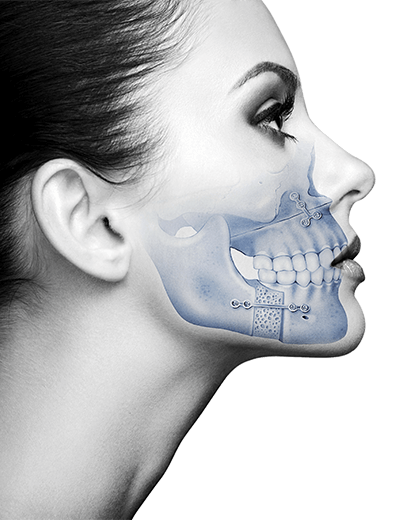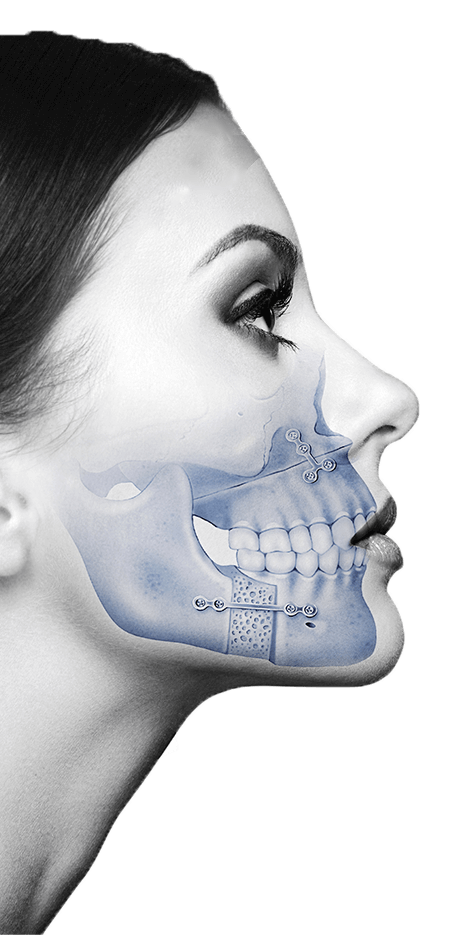It is difficult to measure beauty because of its great variability. However, there are some elements -subjectives-, which must be present for the face to be perceived as beautiful or harmonious: symmetry, vertical excess of the lower third of the face, anterior divergence, convexity, and soft tissue tension. Let's see each one of them:
Symmetry
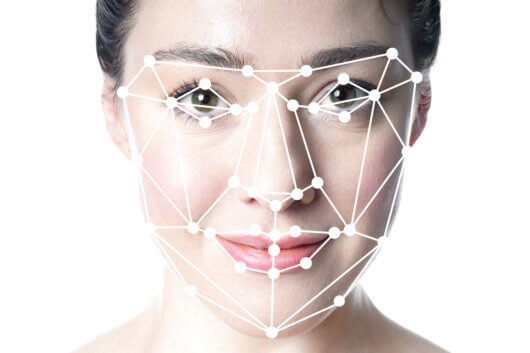
Symmetry is the only parameter that we can assess in an "objective" way, that is, a face is symmetric or it is not.
It is obvious that facial symmetry should be one of the goals of our treatment, especially in patients in whom the lack of it is the main reason for consultation. We must maintain the facial symmetry of the patient who has it, and achieve it in those patients who lack it.
The most important facial asymmetries are conditioned by alterations in the position or size of the jaw, and are more evident in the chin region and angles. Some of these mandibular asymmetries can, with sufficient evolution time, condition asymmetries in the rest of the face. Early detection of these conditions is essential to minimize the magnitude of the treatment. In early stages, many of these processes can be solved with centering and mandibular leveling surgeries. In late stages, most of them will require maxillomandibular surgical treatment.
Vertical excess of the lower third of the face
If we study a sufficient number of contemporary attractive faces, we will find that most of them have a lower facial third that is longer than the middle third.
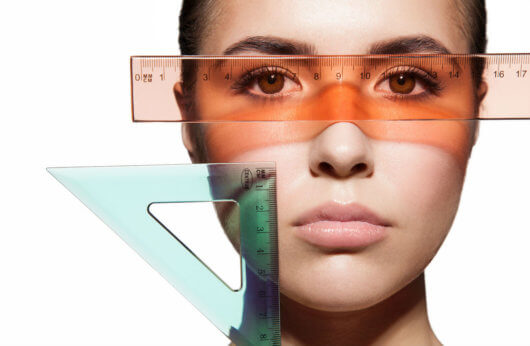 This apparent "disproportion" is a constant in the faces we consider harmonic and there are three parameters that condition this dimension:
This apparent "disproportion" is a constant in the faces we consider harmonic and there are three parameters that condition this dimension:
- anterior maxilla height
- anterior jaw height
- the type of occlusion
Therefore, the dimensional modification of the lower third can be caused by modifying these three parameters. In the case of the maxilla, with impaction or decrease thereof, in the case of the jaw, with vertical increase or reduction of the chin, and finally, the normalization of the occlusion.
Vertical excess of the lower third must nevertheless respect some parameters. In the first place there should not be an excess of dental exposure at rest or gingival smile. Again, the concept of excess is subjective and dependent on variables such as age, sex, race, or facial dimensions.
On the other hand, this vertical excess of the lower third of the face should not cause lip incompetence. Lip incompetence (where the lips at rest are slightly ajar) is a subjective concept related to the same variables as dento-gingival exposure. In young patients, especially women, a certain degree of lip incompetence is convenient and, it will protect the patient from facial aging at this level.
In the profile analysis, lower vertical excess must be accompanied by an adequate projection of the chin in relation to the lips and therefore an adequate lip-mental fold. This fold depends on the relationship between the lower incisors and the chin. Proper orthodontic treatment may be sufficient in many cases to achieve a correct labiomental fold. In many cases, however, it is necessary to have surgery (a mentoplasty), to be able to provoke said fold.
Anterior divergence
This concept refers to the fact that if we draw a vertical perpendicular to the ground that passes through the root of the nose, a good part of the face should be ahead of that line.

But how much face should be ahead of that line? ... a lot. The younger, the more in women, the more in the Latin race and in oriental races, the thicker the soft tissues.
How can we cause anterior divergence in a face? In some cases, the orthodontist can achieve this effect by improving the labial projection with adequate torque from the incisors. However, in most patients the normalization of the problem will go through the mobilization in the anterior direction of the maxilla, jaw, or the entire maxillomandibular complex in the case of so-called biretrusions (orthognathic surgery).
It is important to consider variations in age, sex, and especially race. In that sense, the most protrusive profiles are better accepted in Latin and Mediterranean countries. The Saxon and Nordic races accept better somewhat more retracted profiles. In the end, it is the wishes of each individual patient that will guide our planning beyond standardizations of any kind.
Facial convexity
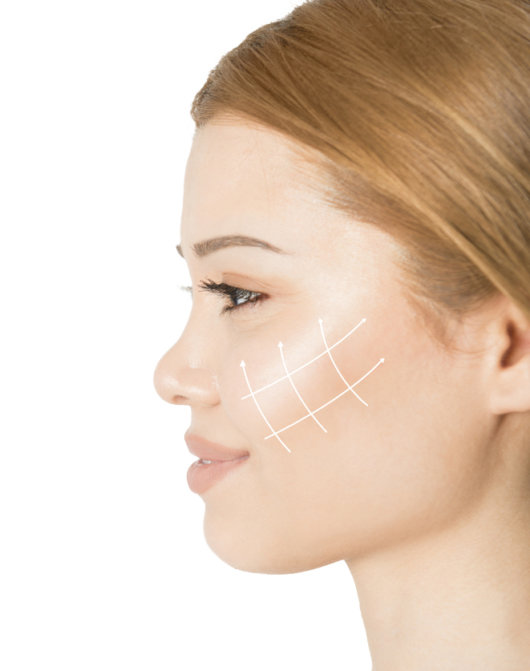
The face should have a convex appearance. Facial convexity is determined by a sufficiently advanced position of the middle facial third - maxillary, paranasal areas, and cheekbones.
Concave profiles are because one or more of the previous structures are delayed. In a few cases, however, we can find concave profiles with an adequate position of the middle facial third, but conditioned by an excess of the jaw.
The correction of the facial concavity is carried out by means of the mobilization of the maxilla, and cheekbones - the paranasal areas advance as the jaw advances - and sometimes through the retrusion of the jaw.
Soft tissue tension
The faces we like have a “proper” tension and turgor of the skin. This tension depends fundamentally on two factors: the support of the facial skeleton, and the quality and quantity of the skin itself.
 During the last years the idea, which we subscribe, has proliferated that in order to obtain adequate soft tissue support, we must expand the facial skeleton. To do this, we must take into account factors such as lack of tension in the skin, its quality and aging. Therefore, in some cases the expansion of the facial skeleton will have to be associated with specific soft tissue treatment.
During the last years the idea, which we subscribe, has proliferated that in order to obtain adequate soft tissue support, we must expand the facial skeleton. To do this, we must take into account factors such as lack of tension in the skin, its quality and aging. Therefore, in some cases the expansion of the facial skeleton will have to be associated with specific soft tissue treatment.
Soft tissue tension can be achieved in several ways. Sometimes the lack of soft tissue support is conditioned by an inappropriate position of various elements of the facial skeleton. Thus, maxillary and / or mandibular hypoplasia, (when the maxillary or jaw are retracted from their ideal position) and cheekbone hypoplasia cause a lack of support of the facial mask. The older the patient, the most noticeable the effect is. In these cases the resolution of the problem will go through a displacement in the anterior direction of the skeletal elements involved, in what we know as an expansion of the facial skeleton.
Finally, in some cases the sagging of the soft tissues does not depend on the position of the teeth, nor on the bones, but on the effect of gravity acting on an aged facial mask. In this last case, the solution will go through the performance of a facelift.

